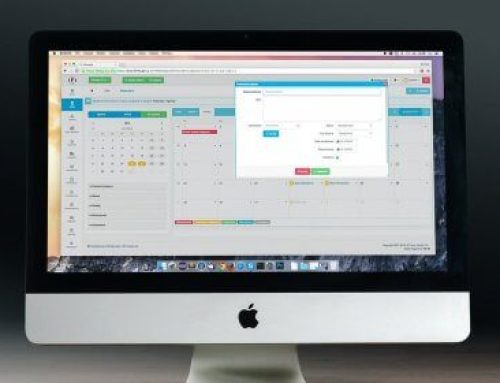Einsteigerguide: Was ist eigentlich eine Animation?
Eine Animation beinhaltet die Nutzung und Verwaltung von Standbildern, um die Illusion von Bewegung zu erzeugen. Eine Person, die Animationen erstellt, wird Animator genannt. Der Animator verwendet verschiedene Computertechnologien, um die Standbilder einzufangen und diese in der gewünschten Reihenfolge zu animieren. Der Entwicklungsprozess einer Animation beinhaltet die Phasen Entwerfen, Zeichnen, Gestalten des Layouts und die Vorbereitung fotografischer Sequenzen.
Das folgende Video zeigt eine einfache Animation:
Unter Multimedia versteht man die Kombination von visuellem und akustischem Material aus verschiedenen Quellen, die zu einem finalen Endprodukt kombiniert werden. Ein Multimedia-Produkt kann aus Texten, Grafiken, Sounds, Animationen und Videos bestehen. Der Begriff Multimedia wird genau genommen verwendet, um Bild- und Audiomaterial zu einer einzigen gemeinsamen Präsentation zusammenzufassen, die z.B. auf einem PC abgespielt werden kann.
Die moderne Entertainment-Industrie wie z.B. Film und Fernsehen konnte durch die Fortschritte in den Bereichen Animation, Grafik und Multimedia neue Maßstäbe setzen. Multimedia-Techniken werden heute in zahlreichen Branchen wie z.B. der Fernsehwerbung oder des Modelldesigns eingesetzt.
Es werden verschiedene Arten von Animationen unterschieden:
- traditionelle Animationen (z.B. handgezeichnete Animationen)
- Stop Motion Animationen
- Computergestützte Animationen
Desweiteren unterscheidet man zwischen 2D und 3D Animationen.
Unter einer 3D Animation versteht man den Prozess der Erzeugung dreidimensionaler bewegter Bilder in einer digitalen Umgebung. Die Manipulationen an den 3D-Modellen oder Objekten werden mit einer 3D-Software durchgeführt, um Bildsequenzen zu exportieren, die ihnen die Illusion einer Animation oder Bewegung vermitteln.
Das Prozess der 3D-Generierung kann man in 4 Phasen unterteilen:
Die Modellierung ist die Phase, die den Ablauf der Generierung von 3D-Objekten innerhalb einer bestimmten Szene beschreibt. Die Layout- und Animationsphase beschreibt den Prozess der Positionierung und Animation der Objekte innerhalb einer bestimmten Szene. Schließlich beschreibt das Rendering das Endergebnis bzw. die Ausgabe fertiger Computergrafiken.
Der Produktionsprozess wird mit der sorgfältigen Kombination der oben genannten und einiger weiterer Teilabschnitte erfolgreich abgeschlossen. Es existieren zahlreiche verschiedene Software-Lösungen auf dem Markt. Das Angebotsspektrum reicht von professionellen High-End-Softwarelösungen bis hin zu erschwinglichen Low-End-Versionen. Als nächstes versuchen wir, die Unterschiede zwischen den beiden Animationen zu verstehen.
Unterschiede im Erscheinungsbild der Tiefe
Einer der offensichtlichsten Unterschiede zwischen 2D- und 3D-Animation ist die Darstellung der Tiefe oder der dreidimensionalen Eigenschaften. Eine 2D Animation ist eine flache Animation, bei der alle Aktionen innerhalb einer x- und y-Achse ablaufen. Bei einer 3D Animation wird die Darstellung eine weitere, die z-Achse, erweitert. Bei traditionellen 2D Animationen werden Bilder von Hand gezeichnet. Jedes Bild weist einige subtile Veränderungen gegenüber dem vorangegangenen Bild auf. Diese Bilder erzeugen bei der Wiedergabe in einer Sequenz eine Illusion von Bewegung. Bei 3D wird alles mit Hilfe des Computers erledigt und in den Computer exportiert. Sie wird durch Änderung der Platzierung und der Posen der bereits erstellten 3D-Modelle erzeugt. Die generierte Szene kann aus verschiedenen Blickwinkeln betrachtet werden.
Unterschiede in den Erstellungstechniken
Es gibt verschiedene Arten von Techniken für die Erstellung von 2D und 3D animierten Objekten und das ist ein weiterer großer Unterschied zwischen 2D und 3D Animationen. Rotoscopy, Anime, Onion skinning, Twining und Morphing sind die wichtigsten Techniken bei 2D Animationen. Die Erstellung von 3D Animationen beinhaltet die Verwendung von Techniken wie appearance sketching, appearance modeling, texturing oder rendering.
Zeitaufwand für die Erstellung von 3D- und 2D-Animationen
Die Zeit, die für die Erstellung von 3D- und 2D-Animationen benötigt wird, ist komplett abhängig von der Aufgabenstellung. Es gibt einige Aufgabenbereiche, die sehr schnell erstellt werden können, während es andere gibt, die Zeit in Anspruch nehmen. Der Zeitaufwand hängt auch von der Anforderung des Kunden und den verschiedenen kreativen Faktoren ab, die für die Erstellung der Animationen verwendet werden. Es ist zu beachten, dass das Erstellen von 3D mehr Zeit in Anspruch nimmt. Das liegt daran, dass es sich um ein detailliertes Verfahren handelt, bei dem Charaktere mit langer Lebensdauer verwendet werden. 2D-Animationen können auch schnell für bestimmte Videos erstellt werden, während die Arbeit für die gesamte Aufgabe gleichmäßig über den gesamten Vorgang verteilt ist. Die Erstellung von 3D-Animationen erfordert ein sehr starkes und klares Verständnis der gesamten Aufgabenstellung zwischen dem Animator und dem Kunden. Dies liegt daran, dass bei der ersten Takelage viel Arbeit geleistet wird. Dies ist die Prozedur, bei der der Computer die Animationsarbeit im Videoformat kompiliert, was einige Zeit in Anspruch nimmt. 2D Animation braucht auch Zeit, weil Animatoren neue Positionen und Winkel für Charaktere in 2D Animation zeichnen müssen.
Entscheidung zwischen 3D- und 2D-Animation
Die visuellen Vorlieben des Einzelnen spielen immer eine wichtige Rolle bei der Entscheidung zwischen 3D- und 2D-Animation. Es gibt jedoch auch andere Faktoren wie der Zeitfaktor, die Zielgruppe oder das Budget, die Einfluss auf den Auswahlprozess haben. Von daher sollten klare Ziele für die zu erstellende Animation definiert werden. Erst auf dieser Basis kann eine sinnvolle Entscheidung für oder gegen eine 2D oder 3D Animation getroffen werden.


